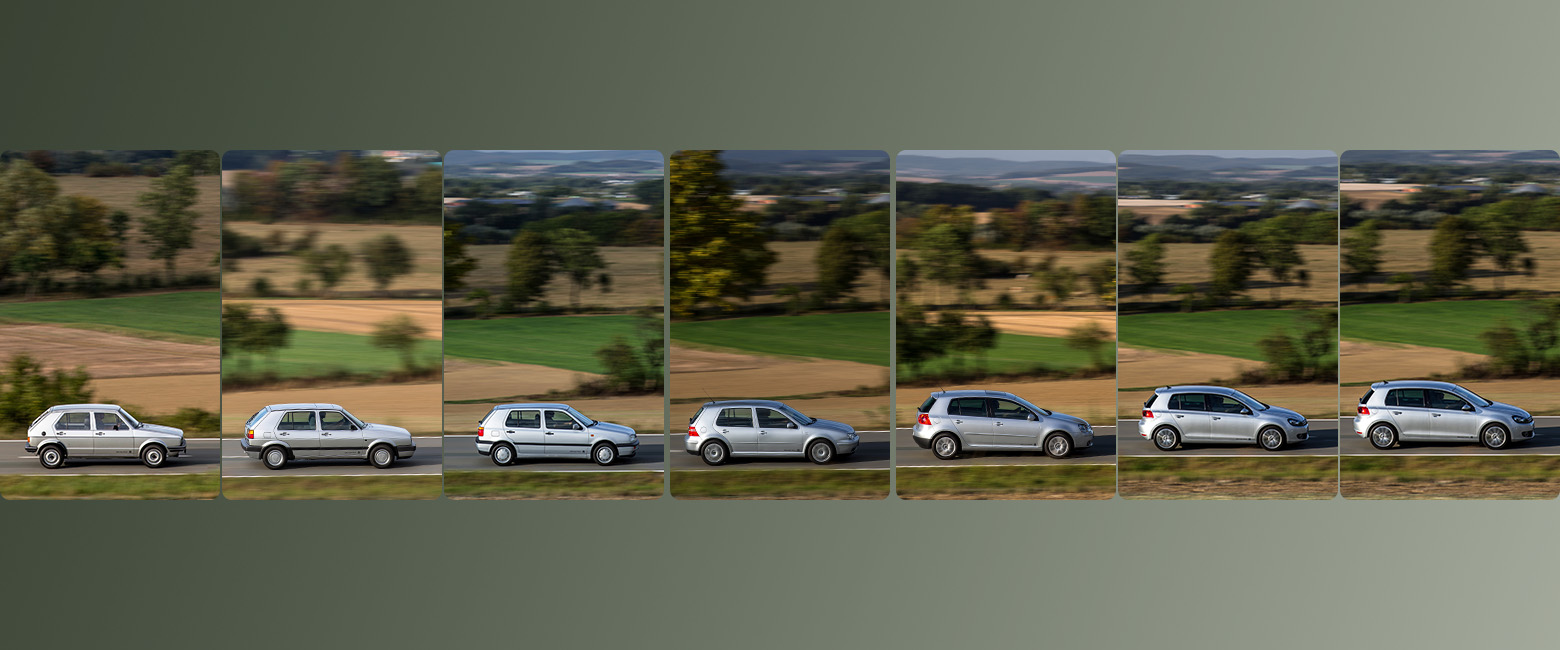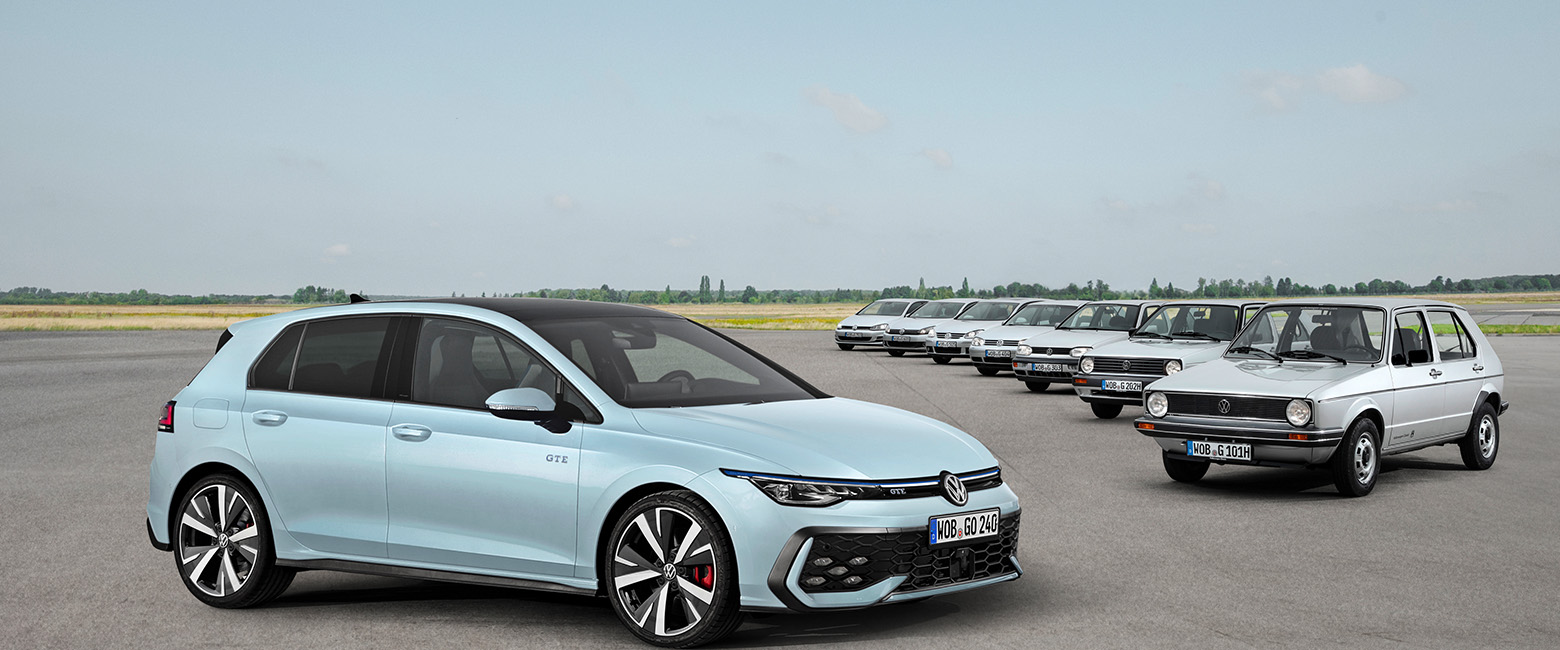The year is 1974. The Watergate scandal sees US President Richard Nixon resign. In Africa, Muhammad Ali fights George Foreman in the famous Rumble in the Jungle. In China, a new wonder of the world, the Terracotta Army, is discovered. In Western Australia, a meeting of the service station owners who will go on to create Capricorn Society is held. And in Wolfsburg, West Germany, the first Volkswagen (VW) Golf rolls off the production line.
Which among these is the greatest cultural touchstone? Let’s make the case for the humble VW Golf.
The Mark 1 Golf was a boxy, front-engined, front-wheel drive replacement for the beloved VW Beetle, which was rear-engined and rear-wheel drive. They were big tyres to fill. The Beetle sold 21.5 million units over 65 years and has captured the hearts and imaginations of people the world over. It was the world’s most successful car at the time.
“As it turned out,” Volkswagen explained in a 2019 retrospective of the Golf, “the modern and safe drive system concept, great flexibility offered by a tailgate and folding rear seat backrest and, of course, its design were so convincing that by October 1976, it was already time to celebrate the millionth Golf produced.”
That’s one million Golfs produced in just 730 days. Almost seven million first generation Golfs—including all derivatives and the (at the time) structurally identical Jetta—were sold in total. That was only the beginning.
Eight generations on and across 50 years, 37 million units of the VW Golf have now been sold—that’s about one Golf sold every 41 seconds. The Mark 6 was World Car of the Year in 2009 and the Mark 7 achieved the same honour in 2013. It was the European Car of the Year in 1992 and 2013. The Mark 4 was the best-selling car in Europe in 2001.

Not only is it VW’s best-selling car ever, the Mark 1 Golf GTI is often credited with starting the “hot hatch” trend for high-performance hatchbacks, which endures in Europe and the UK. The GTI was a fuel-injected 1.6 litre buzz box capable of a terrifying 177 kmh. The standard Mark 1, with its 1.1 litre engine, could travel at a more sedate 145 kmh and go from zero to 100 kmh in 17 seconds. (Power: 37 kW at 6,100 rpm; Torque: 77 Nm at 3,000 rpm.) Famously, Lady Diana Spencer, the soon-to-be Princess of Wales, owned one in light blue.
In 1983, VW launched the Mark 2. It was a bit wider and a bit longer, a bit bigger, a bit heavier and a bit more powerful (with 1.3, 1.6 and 1.8 litre models). It also made it a bit more expensive. It would go on to become a bestseller—though not in South Africa, where, uniquely, they kept producing a slightly updated version of the Mark 1 instead, to keep the cost of the vehicle affordable. Called the “Citi Golf”, it really was the people’s car, “the volk’s wagen” of South Africa. Production stopped in 2009, and that was only because its eight-valve engine fell foul of new emissions laws.
Volkswagen didn’t rush into replacing the Beetle. They first approached Italian designer Giorgetto Giugiaro in the autumn of 1969, charging him with creating the Beetle’s successor. Although they were initially reluctant to hire him, VW had unknowingly just bagged themselves one of the greatest car designers the world had ever known. Giugiaro went on to design 200 models of vehicles totalling sales of more than 61 million units. He was voted “car designer of the century” in 1999. He designed the DeLorean (of Back to the Future fame), the Lotus Esprit and the Fiat Panda.
What was Giugiaro’s genius? Perhaps it was this insight, told to Esquire magazine in 2019.
“Your car is a status symbol to show who you are, what you think and what you would like to be,” he said.
“Humans don’t change: a man will always want to show himself, he wants to spend his money, and show what he prefers by his choice of car. A car can do that.”
How did he reflect on the enduring popularity of perhaps his most successful design—the design that launched his career—the VW Golf?
“Yes, quite a success in the end,” he said. It was a delicious understatement. Like many of the other great occurrences of 1974, the VW Golf has become a cultural icon. Like Capricorn, the Golf has grown and evolved over time. Like the terracotta warriors, its popularity has only increased.
The year is 2024 and like Watergate and the Rumble in the Jungle, the VW Golf’s influence—and its cultural relevance—continues long after the context of its moment.

Images by Volkswagen


